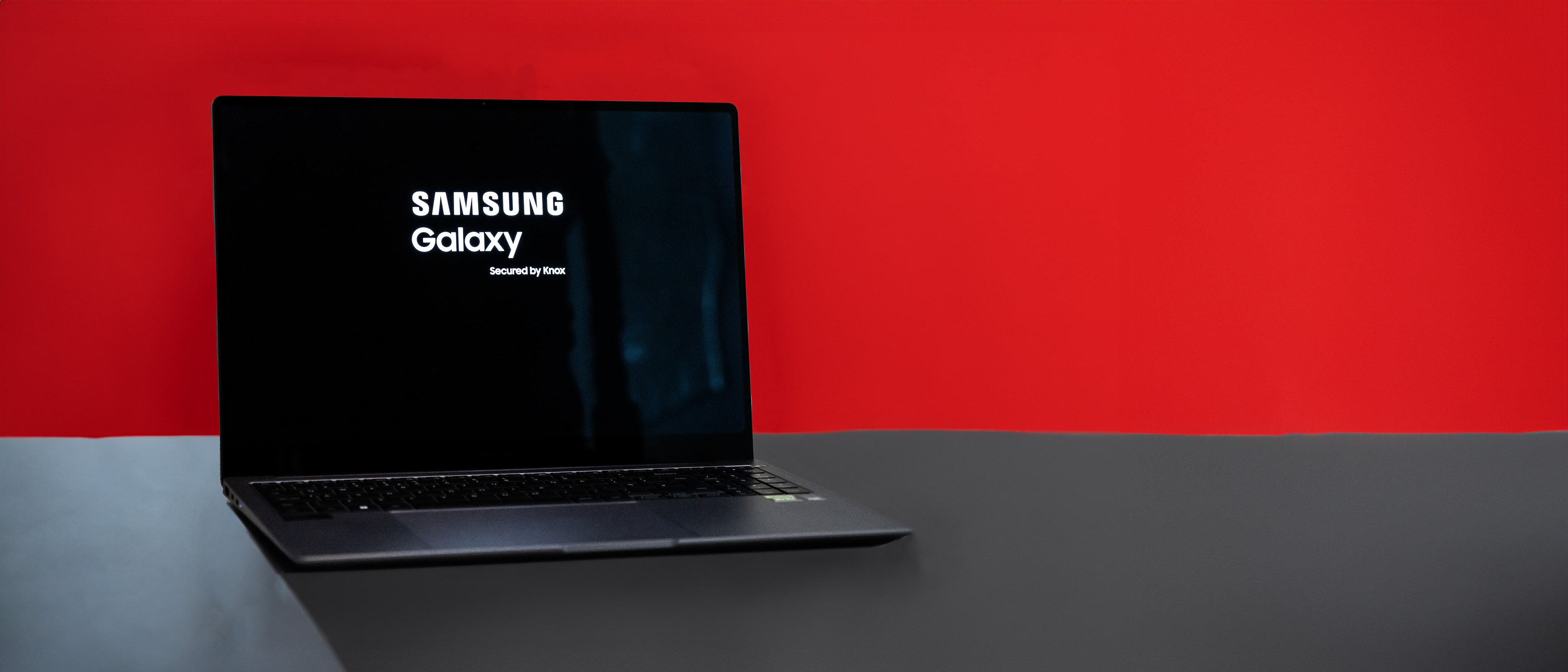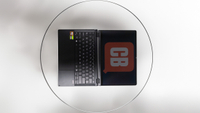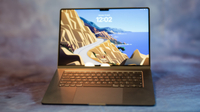Our Verdict
While it lacks the excitement of many gaming laptops, the Samsung Galaxy Book 4 Ultra offers a lot of capability thanks to its powerful Intel and Nvidia chips. It’s well put-together, the screen is bright, colourful and lends itself to a wide display of gamuts, and while it may not beat a MacBook Pro in everybody’s eyes, it’s up there with the best.
For
- Excellent specs
- Bright AMOLED screen
- All-day battery
Against
- A bit dull and grey
- Sound quality not great
- Expensive
Why you can trust Creative Bloq
Intel Core Ultra. Nvidia GeForce. OLED. Some combinations of specs tell you you’re going to get an excellent laptop experience, and so it proves with the Samsung Galaxy Book 4 Ultra, a bit of a mouthful on the tongue but a great machine in the hands.
And it excels on the desktop too. This laptop can handle anything a suite of creative apps can throw at it, with one of Nvidia’s best current-gen GPUs and lots of CPU cores to keep it fed with frames to render. It has all the features you’d expect from a flagship device, including Thunderbolt 4 and an all-day battery. It manages to keep a few quality-of-life updates that will make it a popular choice if you need your laptop to do everything.
Samsung Galaxy Book 4 Ultra: Key specifications
| CPU | Intel Core Ultra 9 185H |
| GPU | Nvidia GeForce RTX 4070 |
| RAM | 32GB |
| Screen | 16in AMOLED touchscreen |
| Resolution | 2880 x 1800 px |
| Refresh rate | 120Hz |
| Storage | 1TB SSD, MicroSD |
| Connectivity | Wi-Fi 6E, Bluetooth 5.3, 2x Thunderbolt 4, 1x USB 3.2, 1x HDMI 2.1 |
| Dimensions | 355.4 x 250.4 x 16.5 mm |
| Weight | 1.86kg |
Design & build
Samsung is locked in a battle with Apple to produce the best pocket supercomputer. Every year its latest Galaxy S smartphone model goes to the front line to be pitted against the newest iPhone, and every year there are hundreds of articles published about which one is best. Both companies are really good at making phones, and they trade blows in new features and design flourishes. You might think, therefore, that the same would be true of the two companies’ laptop offerings, and while it’s true that the Galaxy Book Ultra does have the whiff of a MacBook about it, they’re actually very different beasts.
Samsung’s machine has stuck with an Intel processor, for now, rather than leaping on the Copilot+ bandwagon that’s brought us the Microsoft Surface Laptop 7 and the Lenovo Yoga Slim 7x. The Korean firm has also chosen to put a powerful GPU from Nvidia inside rather than relying on integrated graphics cores, making this an excellent choice for anyone who uses the Firefly generative features in Photoshop, or who wants to game after the studio closes.
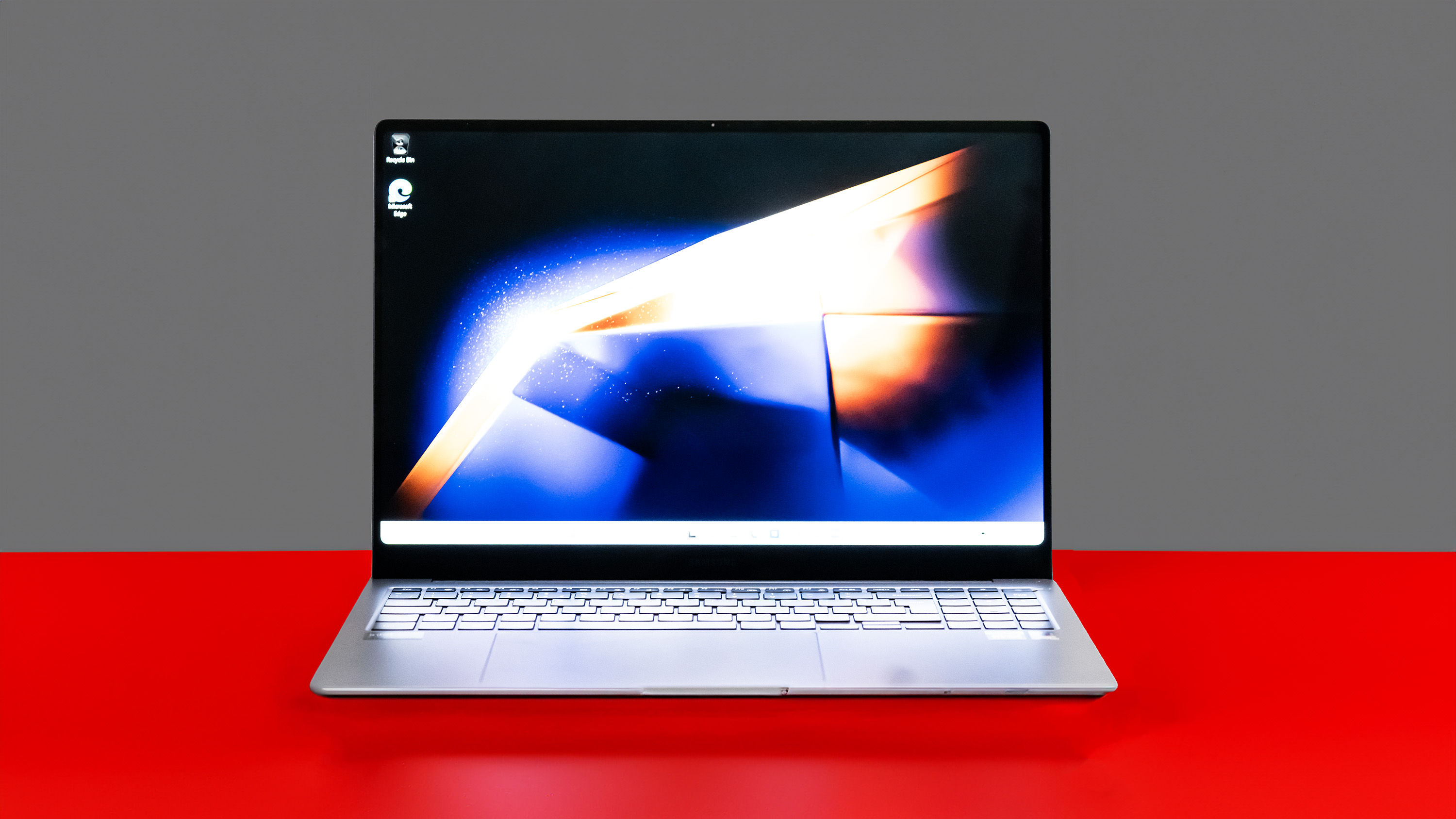
On the outside it’s all extremely grey. It’s a pro-looking laptop with a metal chassis that weighs less than 2kg and isn’t going to be too much of a problem to slip into a bag. It’ll need to be a wide bag, though, since the 16-inch screen (which has well-rounded corners and a thin bezel on three sides) means it’s quite a broad machine. The trackpad is notable for being huge - something that can take a little getting used to as you try to avoid pressing it when you don’t mean to - and the keyboard is full-size and well-spaced thanks to the omission of a numpad and side speakers, though Samsung has managed to find room for a fingerprint reader at the top right.
There's a lot of recycled materials involved in its construction, which is really nice to see, including the plastic, glass and aluminium used in the laptop itself, as well as the packaging, which feels minimal compared to some we’ve seen recently, but does the job perfectly and is much easier to put back together after you’ve pulled it all apart in your eagerness to get inside.
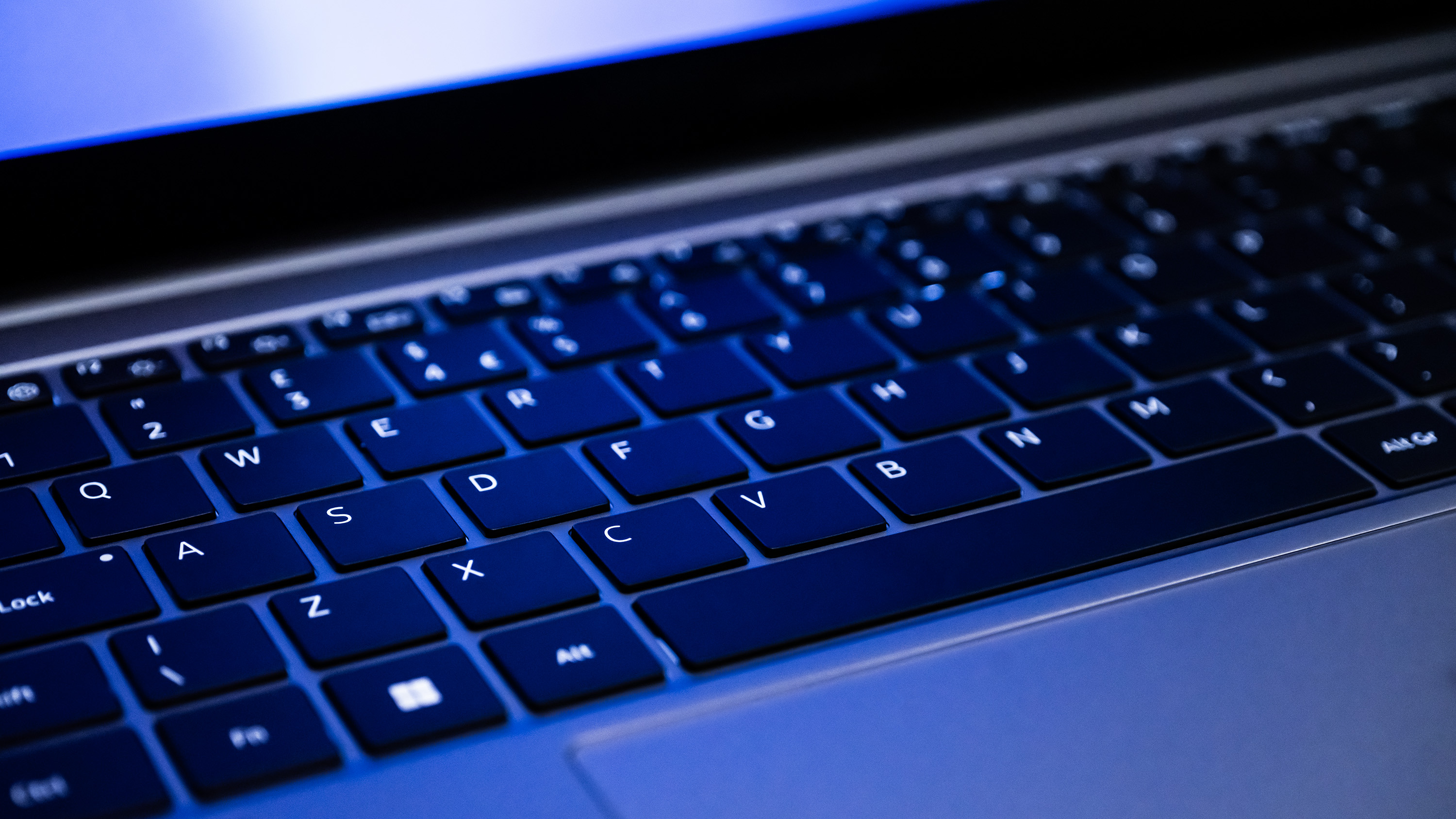
Features
Around the edges of the laptop you’ll find a reasonable selection of ports, including two Thunderbolt 4, which are also used for charging, plus a USB 3 Type-A so you can plug in a mouse and keyboard dongle easily, plus a full-size HDMI for presenting and a MicroSD slot for quick storage expansion. It’s a little picky about chargers, much preferring the one that comes in the box yet putting up with a 60W tablet charger with a message calling it ‘slow’, but it wouldn’t do a firmware update with anything less than the original brick.
The touchscreen is bright and colourful, as you’d expect from one of Samsung’s AMOLED displays. The hinge reclines it back a fair way, but it’s not a 2-in-1 and it doesn’t even lay flat. And despite not appearing either side of the keyboard, there's a quad-speaker arrangement making a noise here, with grilles at the sides. They’re a bit indistinct in the way we’ve become accustomed to with laptop speakers, and while they’ll be absolutely fine for a conference call you’ll want to look into a pair of headphones if you want to use it for movies or TV shows.
There are a lot of apps that come pre-installed, including the ubiquitous McAfee antivirus, but perhaps the most interesting are those that connect to a Samsung smartphone. Windows already has links to Android phones and wireless displays, but Samsung adds the ability to transfer documents straight across and use a Galaxy device as a wireless second screen - the Samsung Galaxy Tab S9 Ultra could come in handy here.
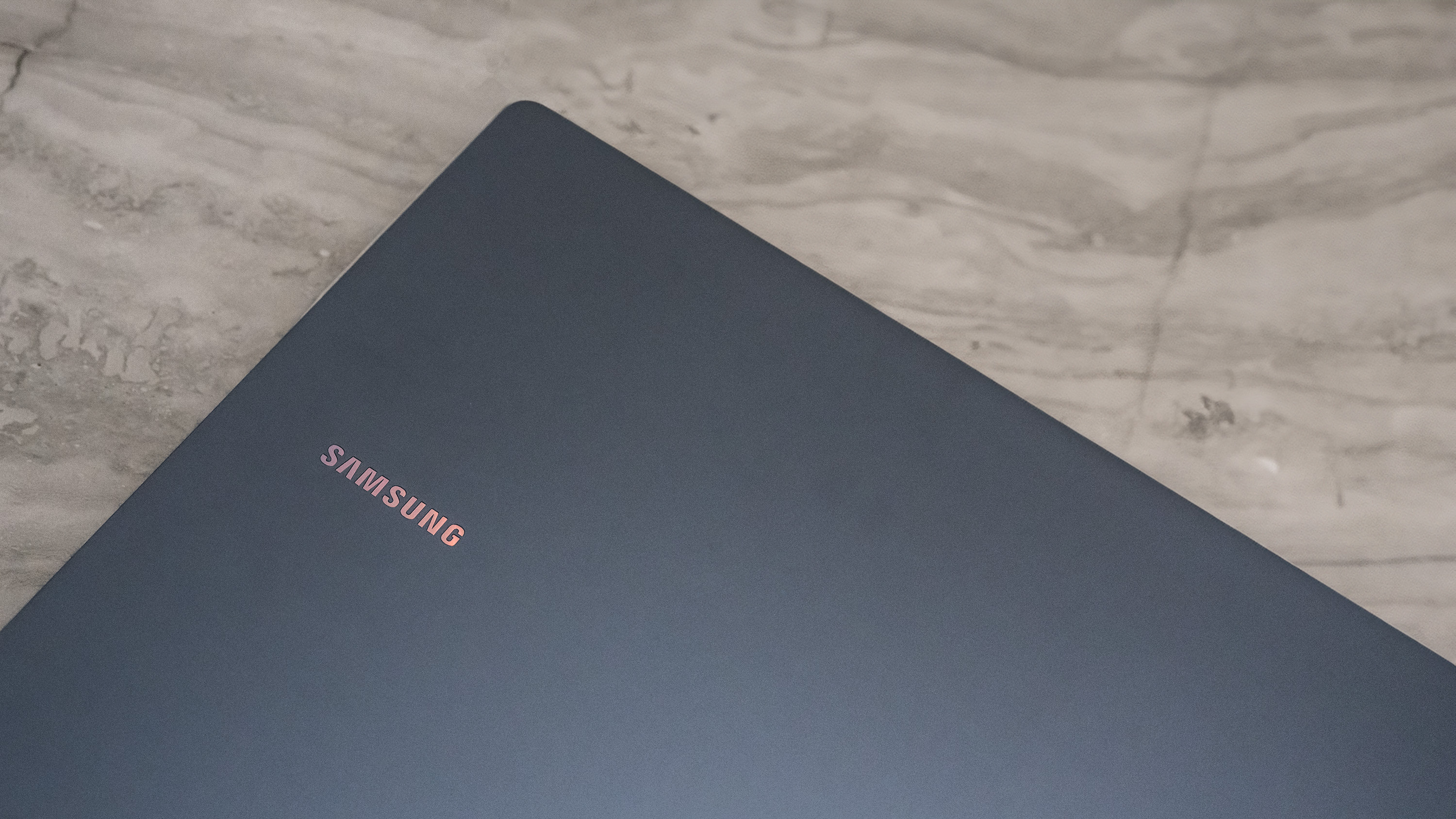
Benchmark scores
| Cinebench 2024 | Row 0 - Cell 1 |
| CPU multi-core | 517 |
| Single-core | 104 |
| GPU | 7185 |
| Geekbench 6 | Row 4 - Cell 1 |
| CPU multi-core | 7288 |
| Single-core | 2447 |
| GPU (OpenCL) | 66675 |
| PCMark 10 | Row 8 - Cell 1 |
| Home test | 6616 |
| Battery life | 12h 48m |
| 3D Mark | Row 11 - Cell 1 |
| Fire Strike | 17081 |
| Time Spy | 7809 |
| Handbrake video encoding | 4m 52s, 66fps |
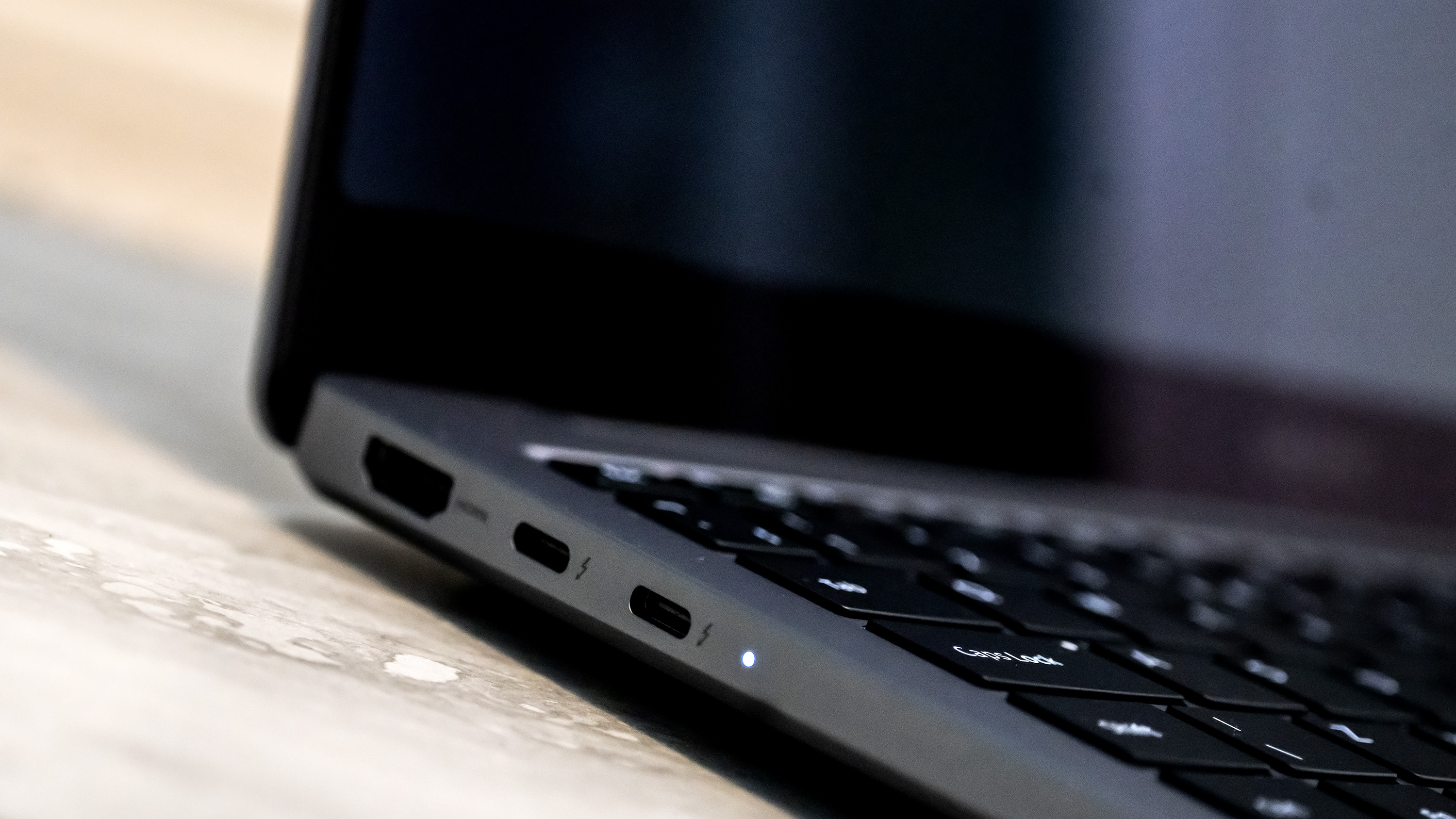
Performance
The Core Ultra 9 185H is a Meteor Lake processor, which benefits from Intel’s current best work in producing laptop chips. It has 16 cores overall, split into six Performance, eight Efficient, and two Low Power Efficient, for a total of 22 software threads. It can turbo all the way to 5.1GHz on the P cores, and pull as much as 115W from the battery, though its base power is just 45W. NPU duties are handled by Intel AI Boost, so this can’t be called a Copilot+ PC and doesn’t have the necessary Snapdragon chip, but the presence of the Nvidia GPU will accelerate Adobe Firefly workloads nicely.
In tests, the Galaxy Book Ultra stands up well against most PCs, but loses out to what is surely its main competition. It comes in lower than the M3 MacBook Air in both the single- and multi-core Cinebench tests, but completely flattens the Apple machine when it comes to the GPU. Over in Geekbench, the eight-core M3 beats the 16-core Ultra 9 again, with only the RTX 4070 allowing it to retain some dignity.
In the Settings app, there are colour space settings for the AMOLED screen, which is nice to see, including AdobeRGB, P3, an AMOLED profile and an auto setting. P3 looked distinctly yellow, but we tested it in AdobeRGB mode with our colorimeter and saw it fulfil 94% of sRGB, 93% of AdobeRGB, and 84% of P3. You could probably improve those figures if you do a proper calibration under your desired lighting conditions. Brightness topped out at 393 nits, which is pretty good and puts it in the top bracket of laptop screens.
Battery life, at almost 13 hours of constant use (though not gaming or rendering) is exceptional, the kind of figure we'd expect from one of the new Snapdragon laptops rather than an Intel/Nvidia mix.
Price
At around £/$3,000 in the configuration we’ve reviewed, this is an expensive laptop. For context, you can get the most expensive 14-inch MacBook Pro (14-core M3 Max, 36GB RAM, 1TB SSD) for just a few hundred more, though that doesn’t come with the Nvidia card. There are some exceptional Windows laptops available at this price point, however, including some that will beat the Galaxy Book Ultra on raw specs.
Who is it for?
Specs-wise this looks like a gaming laptop, and it should do well to keep framerates high in titles such as Cyberpunk 2077 and Elden Ring, but at heart it’s a creator machine - the pre-installed presence of Nvidia’s stable Studio drivers rather than the Game Ready suite shows this. It’s great for heavy rendering workloads, but its portability is also a factor. The screen is great to use, it looks very professional, the trackpad is vast and the battery will last you all day if you don’t push it too hard. For creators, there's a lot to like here, with the prospect of an after-hours jaunt around Night City the cherry on top.
Buy it if
- You need a bigger GPU
- You’re a Windows 11 fan
- You have the money
Don't buy it if
- Something cheaper would do
- You want a Mac
- ...or a Snapdragon PC
Also consider
With a Ryzen AI 9 and an RTX 4070, plus a 2-in-1 OLED touchscreen, this is a lot of laptop for less money than the Samsung.
Or you could even get a MacBook Pro at this price. They’re universally excellent.
It may not have the same GPU power at the Galaxy Book, but the new Snapdragon platform is the future of PCs.
out of 10
While it lacks the excitement of many gaming laptops, the Samsung Galaxy Book 4 Ultra offers a lot of capability thanks to its powerful Intel and Nvidia chips. It’s well put-together, the screen is bright, colourful and lends itself to a wide display of gamuts, and while it may not beat a MacBook Pro in everybody’s eyes, it’s up there with the best.

Ian Evenden has been a journalist for over 20 years, starting in the days of QuarkXpress 4 and Photoshop 5. He now mainly works in Creative Cloud and Google Docs, but can always find a use for a powerful laptop or two. When not sweating over page layout or photo editing, you can find him peering at the stars or growing vegetables.
